Hi everyone! This is Part One of my Insect Mating Pair Series. I will post a new insect each Monday for the next 8 weeks, saving the best for last.
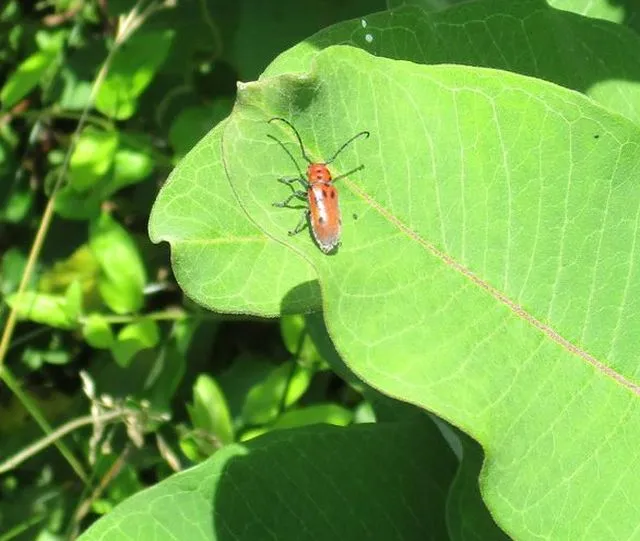
There are different insects that can be found on all different milkweed plants. This Red Milkweed Beetle (Tetraopes tetrophthalmus) is one of those insects and it prefers this Common Milkweed plant (Asclepias syriaca). It is an eastern milkweed beetle in the Long-horned beetle family that I found here in Northeastern USA.
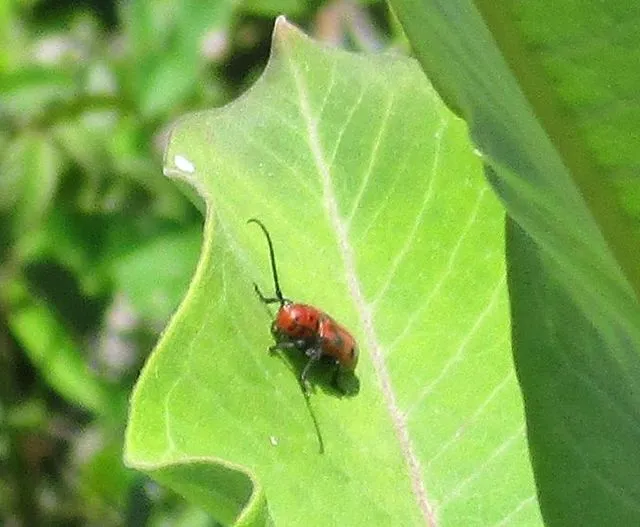
Adults can be found on these plants beginning in late spring when the buds appear. They are approximately 5/16 inches to 5/8 inches long and have a robust body. Their long black antennae are almost as long as their body. Their antennae have a red base that is inserted into their black eyes, splitting the eyes into two parts, and that is why they are sometimes called four-eyed beetles.
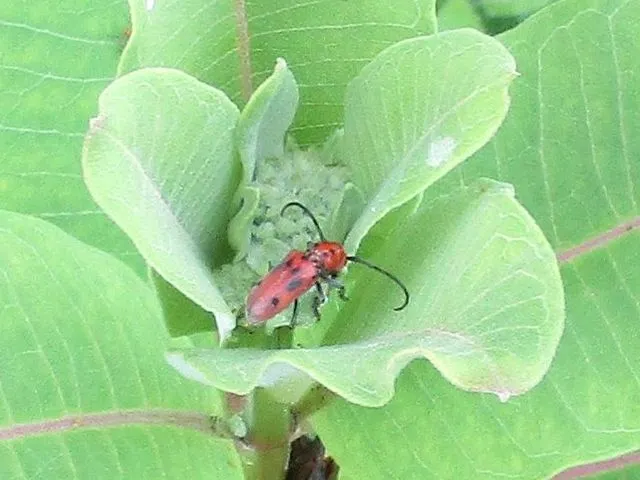
Milkweed plants are toxic and the red milkweed beetle is one of the few insects that can feed on these plants, because they store the toxins safely in their body. They sport the red and black colors which advertises their toxicity to their predators, telling them "I don't taste good."
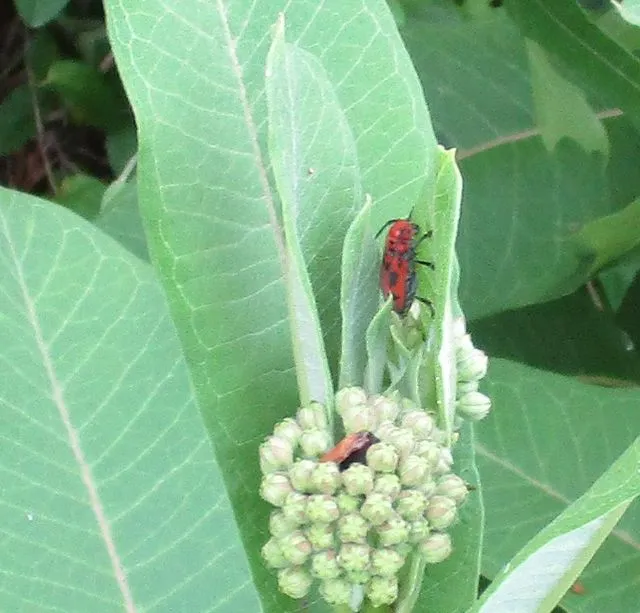
Adult red milkweed beetles eat the leaves, buds and flowers of this common milkweed plant. The plant contains a sticky latex substance and when a red milkweed beetle gets that substance on its mouthparts from feeding, they know to immediately clean their mouthparts by rubbing its face against the leaf, so its mouth won't get glued shut. Isn't that amazing?

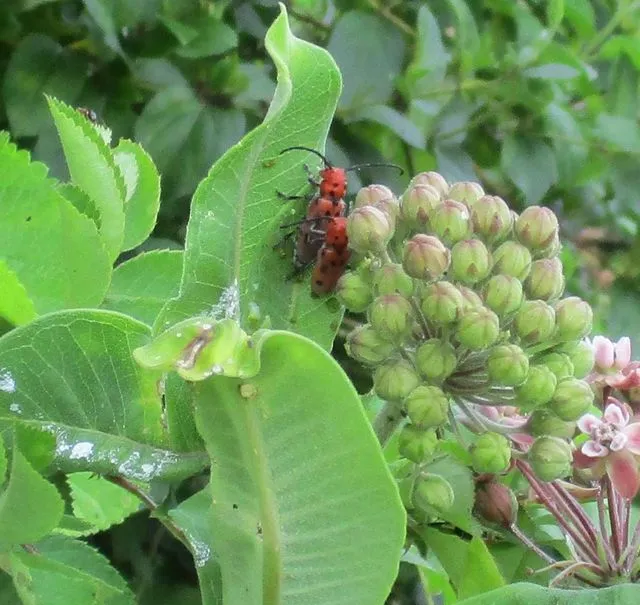
What do these red milkweed beetles do when it is time to mate? The female waits for the male to find her, and she doesn't give him any help because she doesn't send out pheromones. The male knows that if it flies to the milkweed plant, he will eventually find his mate.

The female lays her eggs in early summer on the soil or just below the soil next to the milkweed stem. She may also deposit her eggs into the stem at times. The larvae are called grubs and after they hatch, they burrow down to find the roots of the milkweed plant and that is where they live and grow, while feeding on the roots. They overwinter underground and when they are full grown in the spring, they pupate. Adults emerge one month later.
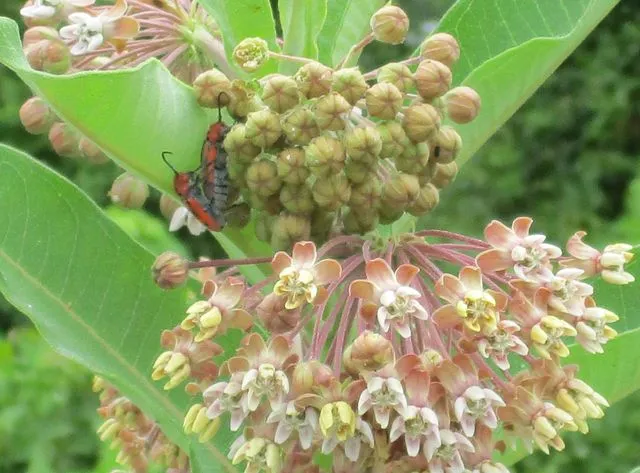
You all know that cats purr but did you ever hear of an insect that purrs? In 1957, a man by the name of Richard D. Alexander studied red milkweed beetles and he heard a "purring" sound when the beetles were alone, feeding or at rest. He also heard a "squeaking" sound when a lone beetle was scared or thought it was in danger. However, Alexander also heard purring and squeaking combined when two beetles meet and touch antennae, or crawl over each other. Isn't that amazing?
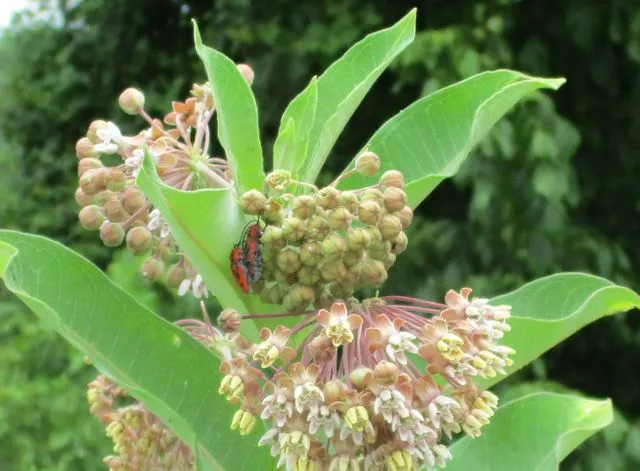
This is my entry for the Amazing Nature Contest created by @adalger. You can go here to find out how you can enter this amazing contest.
Information Source: uwm.edu, minnesotaseasons.com, thoughtco.com